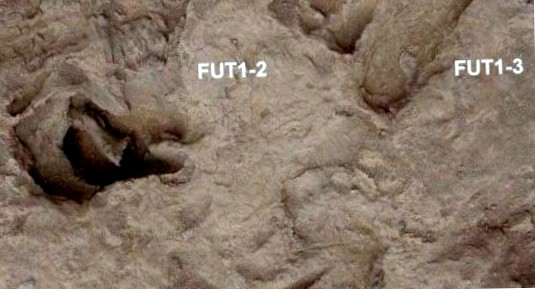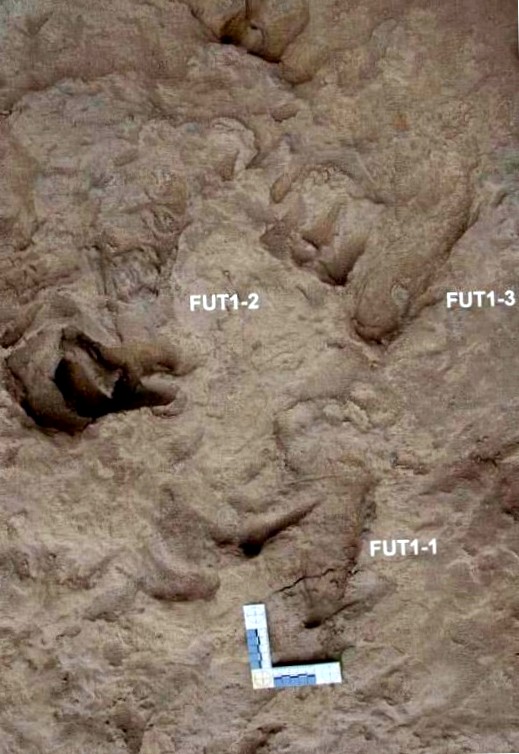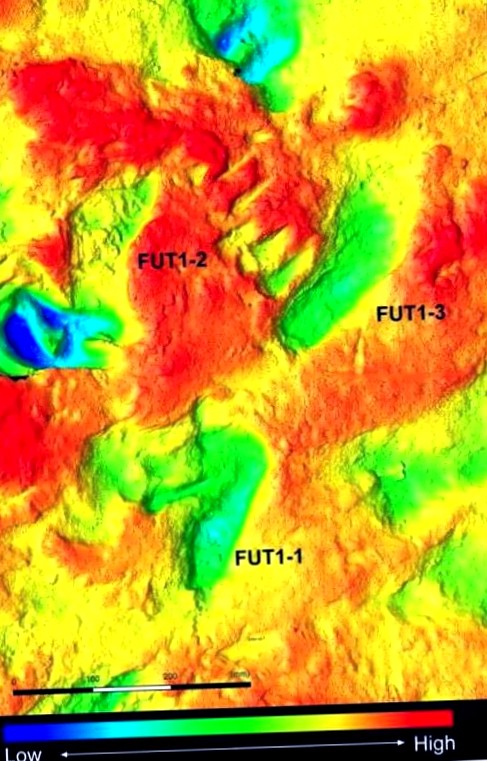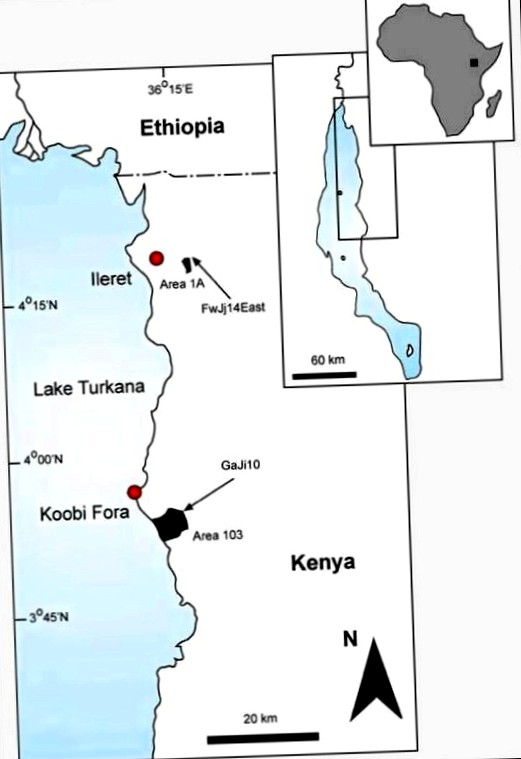
A 1.5 million year old footprint from ileret, photo: m.R. Bennett, bournemouth university
1.5 million year old human fibe prints discovered
Once again there are exciting traces of the ancestors of modern man in africa. In kenya, hominids go on two legs, the impressions of their fruze in the mud, fine sand preserved them over 1.5 million years. The analysis showed that these early people were very similarly built like us.
When did our ancestors began to be more people than monkeys? One of the characteristics is the two-leggedness, the upright gear, which made it possible that our ancestors not only moved very quickly through open bands, but also had their hands free to throw stones on predators and ultimately create differentiated tools.
Petrified skeletons provide only clues about how the leading man moved. A real proof are traces of traces that you can sweep into ashes or clay. Like the imprints of laetoli, which are about 3.5 million years old and were discovered by the famous anthropologist mary leakey mid-70s in tanzania.

A 1.5 million year old footprint from ileret, photo: m.R. Bennett, bournemouth university
But the laetoli fubing prints, the narrow relatives of the famous lucy in the volcanic ash, are quite primitive. Although australopithecus afarensis went upright, but had more similarity with a chimpanzee than with a today’s person
Two million years of lives obviously lived two-legged, which were clearly similar to us. Once again, the shore of the turkana lake in kenya proved to be an important reference. There, among other things, there was an ancestor in 2001, which on the name kenyanthropus platyops was baptized (cf. The flat face from kenya), and 2005 the oldest known ever homo sapiens (see. Really old).
And now the expulsion of the spectacular, ancient fibe prints on the eastern shore of the lake at ileret followed, over which the international scientist team is now reimbursed as a title story in science (cf. Early hominin foot morphology based on 1.5-million-year-old footprints from ileret, kenya).
Jack harris from the rutgers university in new brunswick leads koobi fora field school to convey the palaoanthropology on-site students in kenya. The team put the fossilized impressions of several hominine individuals under deposits layers of sand, volcanic ash, loam and mud, which had gone around 1.5 million years ago by the wet mud, which was mainly made of fine-grain sand. They were largely like impressions of modern dome, which can be enforced by comparisons with the step traces of today at turkana-lake people.

Colored scans of the compressions fut1-1 and fut1-3
But the team wanted it very carefully. Matthew bennett from british bournemouth university in poole scanned the ancient fibrens by means of lasers and created 3d models in the computer, then compared to 13 reference points with both the laetoli impressions, as well as those of contemporary people. It turns out that they are much more even more like the modern impressions than those of their ancestors, which in the field of fubwolbt rather monkeys and also a strongly squeezed coarse toe.
The ilellet’s old front had very similar mouse like modern people. The coordination as a function of the fubwolbung, the shape of the soles, the heel and the short toes is very coarse. A small deviation is available in the coarse seen, which is already arranged in parallel, but today is still closer to the other toes. Overall, step-long and form, as well as impression depth then the fact that the individuals threaded there were built 1.5 million years ago as we were — and also very similarly moving.
The researchers assign them as a representative of the homo erectus (upright person), or. Of the homo erchaster (craftsman man). The latter kind is still controversial, she was introduced after the famous skeleton of the turkana boy, which — as the name already says — was also found near the turkana lake in kenya and is also about 1.5 million years old. However, this otherwise lacks surprisingly complete bone man the hand and fabric bones. They belong to the rarest finds, because they are very small and probably landed very often in the stomach of predators or aase frames.
The proportions of the ileret impressions allow jerks to coarse and weight of hominines that they are liable. Your gait must have been very similar to ours, they shifted their weight from the heel on the bales and toes at each step. They were anatomically very similar, 1.50 m and 2 m coarsely, with faulted arms and pretty long legs. The longest lane comes from an individual with 25.8 cm boltange — today he was probably wearing shoe groove 41.
In addition to humanities, the scientists also found various petrified animal traces, so that they can make a comprehensive picture of how the landscape on the banks of the lake must have looked around 1.5 million.
Never before were so old traces of fibers have been discovered, which are similar to those of the modern man. This is not least exciting because running is considered a significant property in human evolution (cf. He runs and run and run). To get the hands free to hening, and overview of free countries, were essential prerequisites for the development of the human brain and spirit. The homo erectus was probably the first person who in love in africa to conquer the earth — at his two farms steadily marching ahead.

Map of the locations in the koobi fora region.
The region around the turkana lake will certainly keep further revelations about our origin for us ready. And the reference at ileret is carefully opened. Matthew bennett is simply enthusiastic about the square and hopes for more finds:
This excavation bar is something very special — it offers the possibility of accurate dating, fantastic evidence of chamophilic prasence and many palao environmental findings, through which we can make an exact picture of the former environment. A really fantastic discovery that promises much exciting potential for the future of palaoanthropological work there.